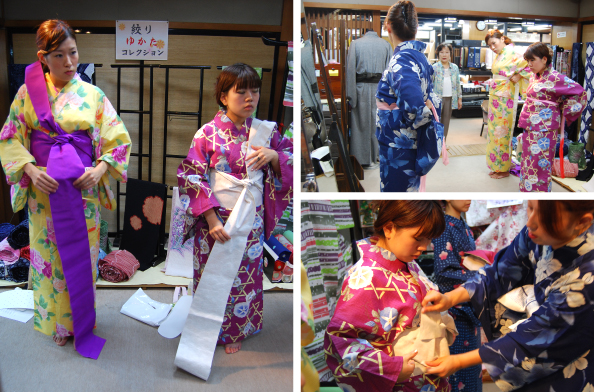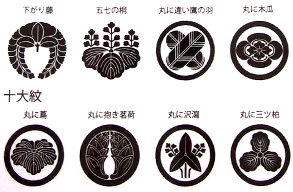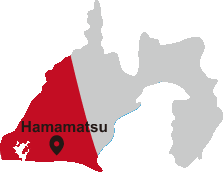Town seminars are small scale seminars in which shopkeepers from the shopping district of Hamamatsu inner city take on the role of lecturers to pass on professional expert knowledge and information to the general public. First held in April 2011, the Hamamatsu town seminars are now conducted on a regular basis.
Attending the seminars is free of charge. (In some cases, depending on the store giving the seminar and the seminar content, there may be a requirement to cover material costs only.) Additionally there is, of course, no pressure or obligation to make any kind of purchase once the seminar is over. The main objective of the seminars is for participating stores to gain a sense of security by building relationships of trust with attendees, making them aware of the existence and features of their businesses through direct communication.Many stores participate in each seminar, generously passing on a huge amount of knowledge to the public.Anyone who finds something in the seminar that they have long been curious about is free to join without hesitation, as attendance doesn't cost a thing!
※Attendance numbers for each seminar are limited, so those wishing to attend should always apply in advance.

http://machizemi.hamazo.tv/e4664780.html (Japanese)
Experience report vol.1
"How to put on a yukata by yourself"
"How to put on a yukata by yourself"
2013 / 8 / 6 10:30 p.m. - 12:00 p.m.
[Place] Fashion Kimono Ishibashi
Yukatas are one of many seasonal traditions of Japanese summers. Compared to the kimono the yukata is worn more frequently, especially amongst women, to whom it remains consistently popular. However, even amongst Japanese there are quite a number of people who do not know how to put on a yukata by themselves.
Yukatas are one of many seasonal traditions of Japanese summers. Compared to the kimono the yukata is worn more frequently, especially amongst women, to whom it remains consistently popular. However, even amongst Japanese there are quite a number of people who do not know how to put on a yukata by themselves.
The seminar I experienced for this report was a "How to put on a yukata by yourself" class. As the name implies, this particular seminar was aimed at people with a love for yukatas and who want to be able to get dressed in one by themselves.
At the beginning of the seminar a brief discussion about the spirit and intent of the town seminars, as well as an introduction to the shops of Ishibashi, was conducted. (3 minutes approximately.) After that, we were given a description of a simple yukata, which was modeled by a mannequin. Right from the start I found myself learning a lot of things I had not known before, such as the names of a yukata's hem-line, collar, etcetera, as well as how to wear a yukata so it looks its best.

With the simple explanation out of the way, we got straight down to dressing!
First we put on the hadajuban (a kind of under garment that is worn beneath the yukata). Then, while listening to the instructor's explanations and sometimes availing of assistance, we began putting on the yukata, slowly but surely managing to finish dressing.
Once the yukata was correctly in position it was time to secure it with the obi!
Once the yukata was correctly in position it was time to secure it with the obi!
Although they say tying an obi is a relatively simple task when you are used to it, I had a lot of difficulty getting mine tied tightly. Yukatas are supposed to help the wearer keep cool, but I found myself sweating an enormous amount whilst attempting to do this.
Once the obi was neatly tied, we were finished!
Or so I thought. But then we were instructed to remove both obi and yukata and put it all back on again, this time by ourselves. Once again, we began putting on the yukata, this time attempting to do it alone. Though, of course, we still had to seek assistance from our instructor.
Once I got the hang of getting dressed, the next thing to learn was the many various ways of tying an obi. So not only did I learn how to put on a yukata for free, I was also taught a slightly unique method of obi-tying! I now have an urge to go parading through the city in super-chic style tomorrow.
Once I got the hang of getting dressed, the next thing to learn was the many various ways of tying an obi. So not only did I learn how to put on a yukata for free, I was also taught a slightly unique method of obi-tying! I now have an urge to go parading through the city in super-chic style tomorrow.

Finally, we were shown how to fold the yukata. Did you know there is a very specific way of doing this? In order for a yukata to look its best when worn, it is vital that it is also stored impeccably.
Once the seminar was fully completed, a questionnaire was passed out to all attendees. We had a chance to write down our impressions of the seminar, as well as make requests for other types of town seminars we would like to see in the future.
Once the seminar was fully completed, a questionnaire was passed out to all attendees. We had a chance to write down our impressions of the seminar, as well as make requests for other types of town seminars we would like to see in the future.
The entire seminar was conducted over about an hour and a half. At the end, attendees each had an opportunity to chat with the instructor individually. I found it to be a worthwhile experience that helped close the distance between customer and shopkeeper a considerable amount.
I learned so much from this town seminar, at no cost to me, and it was a very satisfying experience!
■ Although yukatas and obis were available to borrow at this seminar, attendees had to bring their own underwear and correction towels.
■ Depending on the seminar, there may be a requirement to bring certain items, so please enquire beforehand.
Experience Report vol.2
"Family Crests / A charm that has lasted over a thousand years"
2013 / 8 / 31 11:00 p.m. - 12:00 p.m.
[Place] Festival supplies store Kamoeya
 The next town seminar I experienced introduced us to the charm and appeal of family crests, which even Japanese people, though we might think otherwise, are surprisingly unaware of. Yondaime Sato-san, of Festival Supplies Store Kamoeya, was the lecturer for this event.
The next town seminar I experienced introduced us to the charm and appeal of family crests, which even Japanese people, though we might think otherwise, are surprisingly unaware of. Yondaime Sato-san, of Festival Supplies Store Kamoeya, was the lecturer for this event.Does everyone know what their own family crest looks like? Primarly, family crests are meant to be displayed prominently on headstones and crested kimonos, or, in the case of Hamamatsu, on the happi coats and kites seen during the well-known Hamamatsu Festival. By taking part in this seminar, I was given a wonderful opportunity to once again gain a deep understanding for the family crest passed down to me by my ancestors.
Family crests have a history that dates back as far as the Heian period, and the reasons and origins as to how they came about were explained in a concise, easy-to-follow manner.

Although, by his own admission, Sato-san himself is not overly familiar with history, he was able to explain the history of family crests in a friendly and jovial manner, and it was a delight to listen to. Rather than give complicated explanations packed full of expert information, he explained things in a way that even those not familiar with history could easily understand, sprinkling in plenty of anecdotes and even wandering off topic from time to time. With questions flying freely from the seminar attendees, we also got to hear a lot about the family crests and festivals that Festival Supplies Store Kamoeya are specifically involved with.

Documents relating to each attendee's own family crest, details of which had been requested at time of registration, had been prepared for everyone to take home as a souvenir.
Amongst those in attendance were individuals with interests in similar topics, who were able to jump naturally into the discussion to exchange information about seminars they had participated in themselves. All in all, this helped make the area an easy-going, friendly space. Of course, Yondaime's personality was a big reason for the creation of this harmonious environment.
As a result of taking part in this town seminar, I was able to engage in deeper interaction than normal with the people who work in the shops and I now feel that, in future, I will be much more at ease about paying them a visit.
・WE RECOMMEND!
・Fashion Kimono Ishibashi A well-established shop with over 90 years of history
・Kamoeya Festival supplies shop established in 1905
・TAKI & TRS Enjoy marine activities in nature, but still close to the hamamatsu station
・Yumehana school Ikebana (the Japanese art of flower arrangement) school where you can learn both in English and Japanese
・Hamanako paraglider school Viewing Lake Hamana from 300 meters above the ground
2015.5.20 update
Content may be subject to change after publication. Please also note that we are not accountable for loses and damages that may occur as a result of said changes.
Content may be subject to change after publication. Please also note that we are not accountable for loses and damages that may occur as a result of said changes.





